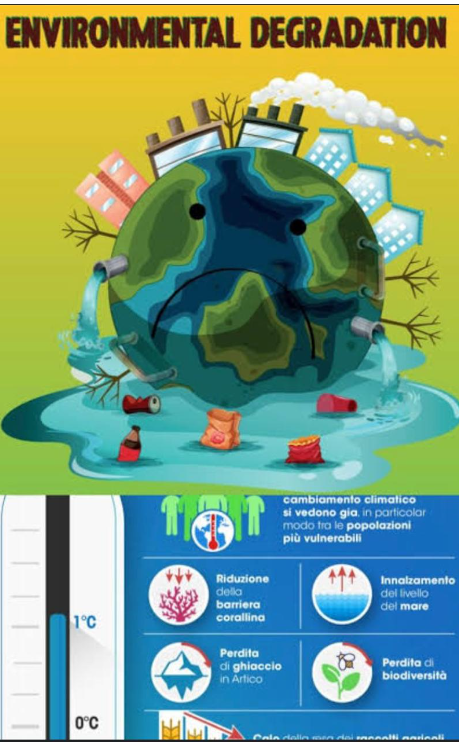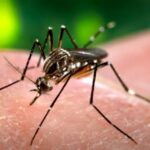Dr. Saeed Ahmad Ali
LAHORE, Feb 25 (APP):Experts believe that toxic chemicals and microbial contaminants/agents created by natural and anthropogenic activities, that are rapidly becoming environmental hazards (EH) with increased potential to affect the natural environment and human health.
Talking to APP on Sunday they opined that the interaction between human health and environmental hazards has been extensively interlinked, that was repeatedly researched and studied on latest scientific methods.
In the race for economic development, gains and prosperity, our earth is becoming more vulnerable to climate change impacts and pollution caused by anthropological activities with each passing day, they lamented.
Talking to APP they opined that technological advances in agriculture and rapid industrialization have drastically polluted the two pillars of natural resources, i.e land and water.
Toxic chemicals and microbial contaminants/agents created by natural and anthropogenic activities, that are rapidly becoming environmental hazards (EH) with increased potential to affect the natural environment and human health.
In this connection noted pulmonologist Dr. Zeeshan from Jinnah Hospital Lahore says the environment has serious effects on our health in a variety of ways, by significantly impacting human health in two ways, either directly by exposing people to harmful carbon-agents or indirectly, by disrupting life-sustaining ecosystems.
The World Health Organization (WHO) in its recent report has given its estimation that thirteen million deaths annually are attributable to preventable environmental causes.
The report also estimates that 24 percent of the global disease burden (healthy life per year loss) and 23 percent of all deaths i.e. premature mortality are attributable to environmental factors, with the environmental burden of diseases, being 15 times higher in developing countries than in developed countries, occur due to differences in exposure to environmental risks and non-availability of access to health care amid the environmental reasons.
The report further says that five children in developing countries in every one minute die from malaria or diarrhoea.
Likewise, 100 children die every hour, as a result of exposure to indoor smoke from solid or fossil fuels.
Similarly, nearly 1,800 people, every day die in megacities of the developing countries as a result of exposure to endangered urban air pollution.
And, every month, nearly 19,000 people in developing countries die from unintentional poisonings.
Noted environmentalist Dr. Shafqat Munir Ahmad told APP that huge economic development and multiplying population are resulting in prevailing environmental degradation.
Intensification of industrialization, agriculture and increasing energy use were the most severe driving forces of environmental health problems.
For developing countries, severe lack of public infrastructure, such as access to clean drinking water, lack of health care, and sanitation issues were generated due to emerging problems of industrial pollution (as mushrooming of industrial units without planning is creating significant issues of public health, he added.
Climate change is directly posing threats to human health and well-being and this is rapidly emerging as a serious health concern worldwide, he said adding that in the year 2000, climate change was estimated to be responsible for approximately 2.4 percent of worldwide diarrhoea and 6 percent of malaria.
But now, according to the UN Intergovernmental Panel on Climate Change (IPCC) third assessment report, the world temperature is expected to further rise during the current century, implying more and increased health threats for human populations, especially in low-income countries.
Regarding the socio-environmental impacts in Lahore, a noted expert Safdar Ali Shirazi said that for the past few decades, due to rapid urbanisation, the provincial metropolis has lost its aesthetically important urban tress, green cover and around all green scenic cover.
He revealed that the loss of vegetation and trees has been witnessed vanishing at an astonishing rate in many union councils of the city.
Noted pulmonologist and critical care physician Dr. Muhammad Ahmad said that dramatic occurrences of rising Asthma cases, throughout the global cities were increasing at at an alarming level.
He said that various environmental synthesis reports are giving precautionary warnings that further erosion of ecosystems could lead to an increase in existing diseases such as malaria and cholera, as well as a rising risk of new emerging viral diseases in the world.
To a query Ahmad said that safe drinking or bathing water in megacities can impose serious risks (both acute and delayed) to human health, adding microbe contamination of groundwater due to arsenic-rich levels and high concentrations of poisonous nutrients in sewage waters due to agricultural runoff are among the most serious threats.
Heavy metals such as lead (Pb), mercury (Hg), and chromium (Cr); pesticides; organic pollutants; microplastics; and emerging contaminants are posing challenges to human health.
They are responsible for various types of cancer, allergies, and neurological and cardiovascular disorders resulting in a large number of deaths worldwide.
Environmental Protection Department Director Naseem-Ur-Rehman Shah said that the mushrooming of industrial units across the country has led to a situation where our natural resources including soil, water, and fossil fuels are becoming polluted as well as getting exhausted at a rapid scale.
There is a pressing need to find environment-friendly solutions to the problems emanating from the processes generating environmental hazards for a sustainable development roadmap, he added.
Dr. Mahmood Khalid Qamar, a environmentalist having his Ph.D on Mangroves’ sustainability said that amid the global environmental hazards’ conditions that include climate change, environmental degradation, natural calamities such as soil erosion, famine, floods, and rising sea levels are the most common problems that restrain the path towards sustainable development.
In the race for economic development and prosperity, the earth’s planet is becoming more vulnerable and polluted with each passing day, he said.
Likewise, technologically advanced methods in agriculture and rapid industrialization have drastically polluted the two pillars of natural resources, water and soil.
Telling remedy, he said in this connection, microbial contaminants, arsenic compounds, toxic chemicals’ contaminants created by anthropogenic activities, should be controlled immediately by limiting human activities and giving them awareness,
These human activity outcomes are rapidly involving into a variety of food with increased potential to affect the natural hygiene-value, environment, and human health, he said.







